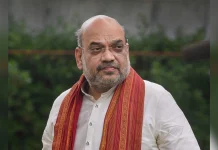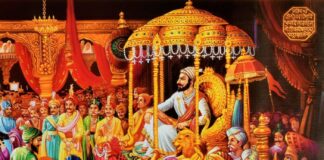Given the fractured history of the Bodo movement, the prospect of recalcitrant elements remaining in Myanmar is not an unrealistic one, underlining the importance of efforts both by New Delhi and the NDFB-S leadership to reach out to these remaining elements.
By Dr.Alex Waterman
On January 27, 2020, the central government announced that it has signed a “historic” accord with four factions of the National Democratic Front of Bodoland (NDFB) – NDFB-Progressive (NDFB-P), NDFB-Ranjan Daimary (NDFB-RD), NDFB-Dhirendra Boro (NDFB-DB) and NDFB-Saoraigwra (NDFB-S, formerly NDFB-Songbijit). The accord reportedly included a number of political and economic measures designed to strengthen the autonomy of the Bodoland Territorial Area District (BTAD), now renamed as Bodoland Territorial Region (BTR), as well as mechanisms to rehabilitate the members of each armed group into everyday life.1 The accord was lauded for ushering in “a golden future for Assam and for the Bodo people.
The accord marks a series of fast-paced developments in January 2020 in what had otherwise been a drawn-out peace process dating back to 2008. The NDFB-S was one of the last remaining anti-peace talks insurgent groups in Assam and a key group in the anti-talks umbrella front, the United National Liberation Front of Western South East Asia (UNLFWESEA). On January 12, it was reported that two groups of NDFB-S – totalling approximately 50 cadres including the group’s leader Saoraigwra Basumatary – had crossed into India from their bases in Myanmar to make peace with the Indian Government.3 A third group of unspecified size, led by senior leader M. Batha entered Gossaigaon in the Kokrajhar District of Assam on January 15.4 A day later, the NDFB-S formally signed a tripartite Suspension of Operations Agreement with the state and the central government.5 On January 19, a designated camp was established to house the cadres, marking the group’s integration into the wider ceasefire architecture.6 This was quickly followed by the conclusion of a tripartite Bodo Accord, signed by the four main factions of NDFB, the All Bodo Students Union (ABSU), the United Bodo People’s Organisation (UBPO) and the central and the state government, eight days later, on January 27.
Taking into account the June 2019 estimates that approximately 100 NDFB-S insurgents were camped in Myanmar,7 the entry of well over 50 militants, including the faction’s leader and prominent commanders,8 into India and their integration into the peace accord marks a significant development in the trajectory of the Bodo insurgency. This issue brief places NDFB-S’s entry into the peace process in the context of the wider Bodo insurgency and examines how counterinsurgency operations have eroded the group’s capabilities. It concludes by exploring the possible implications of the third Bodo Accord and analyses the potential challenges that lie ahead.
NDFB-S and the Wider Bodo Insurgency
The NDFB-S emerged from a fractious Bodo armed movement that had undergone numerous splits since the first militant groups emerged to campaign for the sovereignty or autonomy of the Bodo-inhabited areas of Western Assam in the mid-1980s.9 Formed initially as the Bodo Security Force (BdSF) on October 3, 1986, the group rebranded itself as NDFB in April 1993.10 The rebranding marked its rejection of the 1993 Bodo Accord, which had led to the creation of a territorially-delineated Bodo Autonomous Council that granted constitutional privileges to villages containing Bodo population of 50 per cent or more.11 The accord was followed by an outburst of ethnic violence against perceived ‘outsiders’ as militant groups such as the BdSF sought to redress the ethnic balance in favour of the ethnic Bodos.
The NDFB signed a ceasefire in 2005, but an informal split took place, with senior leader Ranjan Daimary remaining in Bangladesh. This was revealed after Daimary’s faction orchestrated a series of bomb blasts in Assam in October 2008 that left 88 people dead.12 Later, in November 2012, another faction led by I.K. Songbijit was formed when the Daimary faction agreed to join the peace process, resulting in the further splintering of the movement. In December 2014, the Songbijit faction carried out a spate of ethnic killings in Sonitpur and other districts that left 68 Adivasis dead in one of the worst incidents of violence in the region since the 1990s.
In response to this violence, a large-scale counterinsurgency operation, codenamed ‘Operation All Out’, was launched in December 2014. Initially, up to 9,000 security personnel were deployed, and the central government stopped accepting surrenders.14 Sustained military operations firmly placed the group on the defensive almost immediately. As per the data published by the Ministry of Home Affairs in April 2018, 60 NDFB-S militants had been killed and 1,015 arrested until the end of 2017, highlighting the extent of attrition inflicted on the group.
In January and December 2016, the government twice rejected ceasefire overtures from the NDFB-S. 16This illustrates that rather than seeking accommodation at the first opportunity, the government patiently sought to further leverage its position and negotiate on its own terms. Although NDFB-S leader Saoraigwra17 on January 17 told the media sources that the group’s decision to come over ground did not constitute a surrender but a ceasefire,18 the ceasefire was followed by a period of sustained attrition that severely weakened the clout the group could have brought to the negotiation process.
During 2018 and 2019, the NDFB-S reportedly inflicted zero fatalities on civilians and security forces while seven of its militants were killed.19 In October 2019, the Hindustan Times quoted Assam Police intelligence sources stating that the organisation had just 20 cadres operating in the Bodo-inhabited Western Assam and 50 in Myanmar,20 reflecting the impact of sustained counterinsurgency operations on the group’s operational capabilities.
Although five years of counterinsurgency operations had weakened the NDFB, the porous nature of the Indo-Myanmar border allowed groups such as the NDFB-S to enjoy a degree of sanctuary in Myanmar’s Sagaing region whilst exploiting access corridors into India via Nagaland and Arunachal Pradesh.21 However, their sanctuaries were significantly disrupted during the first half of 2019 as Tatmadaw (Myanmar armed forces) launched a series of operation against camps belonging to the National Socialist Council of Nagaland-Khaplang/Yung Aung (NSCN-K/YA), which hosted NDFB-S militants. According to reports, the operations destroyed several camps and reportedly “scattered” the Indian-origin insurgents in the region and led to the apprehension of several NDFB-S and NSCN-K/YA leaders, including NDFB-S “home secretary” Rebgun.22 Such operational and structural fragmentation, and the subsequent financial, logistical and organisational pressures are likely to have played a critical role in bringing NDFB-S overground.
Character of the Peace Process and Accord
The swift conclusion of the peace accord, and the integration of four disparate NDFB factions into one overarching solution, may have come as a surprise to the followers of the peace processes in Northeast India. Peace talks have over the years been characterised by a slow progress, giving rise to the view that New Delhi is tiring out insurgent movements and in doing so diluting their mobilisational and political clout.23 Indeed, negotiations with the two main pro-talks Bodo factions, NDFB-P and NDFB-RD, had been going on for a number of years with little tangible progress. The NDFB-P had long demanded the creation of a separate Bodoland state within the Indian Union,24 a demand that New Delhi was highly unlikely to grant. Although Naga groups such as the NSCN-Isak-Muivah (NSCN-IM) have recently negotiated on the basis of a form of “shared sovereignty,” the NDFB factions are comparatively weaker, indicating that the NDFB-P’s campaign constituted part of a negotiating strategy to secure concessions below the level of outright statehood.
The rapid pace of negotiations leading to the peace accord, since the integration of NDFB-S into the peace process, was reflective of the declining bargaining clout of the group since the start of Operation All Out. Given the huge losses incurred over the last five years, combined with the disruption of sanctuaries in Myanmar, joining a composite peace process along with other major NDFB factions has allowed NDFB-S to save face and also demonstrate to its cadres and supporters that it has negotiated an honourable and respectable deal.
Perhaps, a parallel can be drawn with the recent integration of seven Naga splinter factions into at times tense but workable coalition labelled as the Working Committee (WC). In 2018 and 2019, the WC was able to absorb elements opposed to the ceasefire such as NSCN-K/YA and Zeliangrong United Front (ZUF) without compromising the group’s core goals, which fall within the ambit of the Indian Constitution.25 Integrating the four NDFB factions into a similar umbrella-type integrative structure appears to have laid the foundation for creating a “one solution” framework, bringing a much weakened NDFB-S into a broad-based power structure, having deprived the group of the clout to seriously threaten and undermine the process. This has not only diluted the core demands of the hard-line elements but also created a framework within which the factional politics can be channelled and managed.
Indeed, the accord falls predictably well short of the statehood demand while granting key economic, political and cultural benefits to the Bodo groups. Following a pattern consistent with the previous Bodo accords, the 2020 accord grants further political and economic privileges to the BTAD. The accord, for example, reportedly involves a three-year economic development package of Rs. 1500 crores, an increase in seats from 40 to 60 on the Bodo Territorial Council (BTC), and as yet unspecified guarantees that more powers would be granted to the BTC. Regarding the territorial scope of the BTR, the accord stipulates that a commission will be constituted to explore the possibility of extending the territorial extent of the BTC to villages with more than 50 per cent Bodo population, whilst excluding those with less than 50 per cent Bodo population.
The accord upgrades the status of the Bodo language to that of an official associate language, and reportedly further explores the possibility of addressing the issue of Bodos living outside the BTAD area.27 This clearly boosts the Bodo demand for the creation of autonomous councils in non-Bodo areas such as the movement for Bodo Kachari Autonomous Council in Dima Hasao and Karbi Anglong districts. However, this is facing opposition from groups already enjoying constitutional benefits in these areas.28
Potential Challenges
New Delhi will, however, need to carefully monitor the situation as the fanfare surrounding the accord subsides. Previous accords have created clear winners and losers that have sharpened inter and intra-ethnic cleavages. The 2003 Bodo Accord, which saw the creation of BTAD comprising Udalguri, Kokrajhar, Baksa and Chirang districts, largely excluded the majority non-Bodo population from the accord, and skewed representation in the new body in favour of the minority Bodo community to the chagrin of the majority non-Bodo population. The new accord is already facing some criticism. On January 27, Kokrajhar’s only non-Bodo Member of Parliament, Naba Kumar Saraniya (Independent), warned that the latest accord has repeated the mistakes of 2003 by excluding the non-Bodos while granting amnesty to the militants implicated in ethnic violence against them.29 The 12-hour bandh immediately declared by non-Bodo student unions such as the All Koch Rajbongshi Students Union, Kalita Janagosthi Students Union and All Adivasi Students Union reflects the anxiety amongst these communities on granting further concessions to a minority already vested with considerable economic and political clout.
It remains to be seen how the 2020 Bodo Accord addresses the structural factors that have driven ethnic violence against the non-Bodos and fuelled subsequent counter-mobilisations in the past. A similar stipulation leading to the inclusion of villages with over 50 per cent Bodo population was contained in the 1993 Bodo Accord.31 This had provoked ethnic violence in villages with less than 50 per cent Bodo population as recalcitrant groups (the NDFB and the Bodo Liberation Tiger Force) sought to shift the ethnic balance, sparking counter-mobilisations from the non-Bodo communities leading to further violence.
Both the central and the state government would have to keep a close watch for the emergence of any potential recalcitrant groups made up of remaining militants from the NDFB-S, which, perceiving exclusion from the accord, may seek to employ an outbidding strategy aimed at violent expulsion of the non-Bodos in an attempt to assert leadership over the movement. Although the NDFB-DB faction is listed as a signatory in the January 27 accord, the expulsion of its leader Dhirendra Boro from NDFB-P in August 201933 highlights the centrality of ensuring that even as these groups transition into overground politics, the factionalism among the Bodo groups does not spiral into violent outbidding.34 The structural and political shifts that the merger of four NDFB factions will bring, needs to be carefully watched.35
Although 1,615 militants from across the Bodo factions formally surrendered on January 30, with 200 reportedly members of NDFB-S,36 the Indian Government will furthermore need to ensure that as many cadres of the fragmented NDFB-S are brought overground as possible. This process received a boost when NDFB-S’s so-called “army chief” G. Bidai, who was reportedly operating from areas bordering Bhutan in Assam, came overground on January 20. Caution should nonetheless be exercised as the anti-talks NDFB-S militants continued to clash with the army even as the main 50-strong group came overground in January. On January 15, for instance, there were reports about a clash between the army and the NDFB-S militants at Dekra Damra in Kokrajhar District, killing one militant.
Given the fractured history of the Bodo movement, the prospect of recalcitrant elements remaining in Myanmar is not an unrealistic one, underlining the importance of efforts both by New Delhi and the NDFB-S leadership to reach out to these remaining elements. Such an approach would need to consist of rehabilitation offers to remaining cadres still active along the Indo-Bhutan and Indo-Myanmar border areas, combined with continued efforts to disrupt the activities of cadres still aligned with UNLFWESEA. This is particularly important considering the possibility of anti-talks insurgent groups projecting the recently passed Citizenship (Amendment) Act as a threat to the ‘indigenous’ communities to garner support and recover the lost ground.
Dr.Alex Waterman is a visiting fellow at IDSA. This article was first published by IDSA and belongs to them








